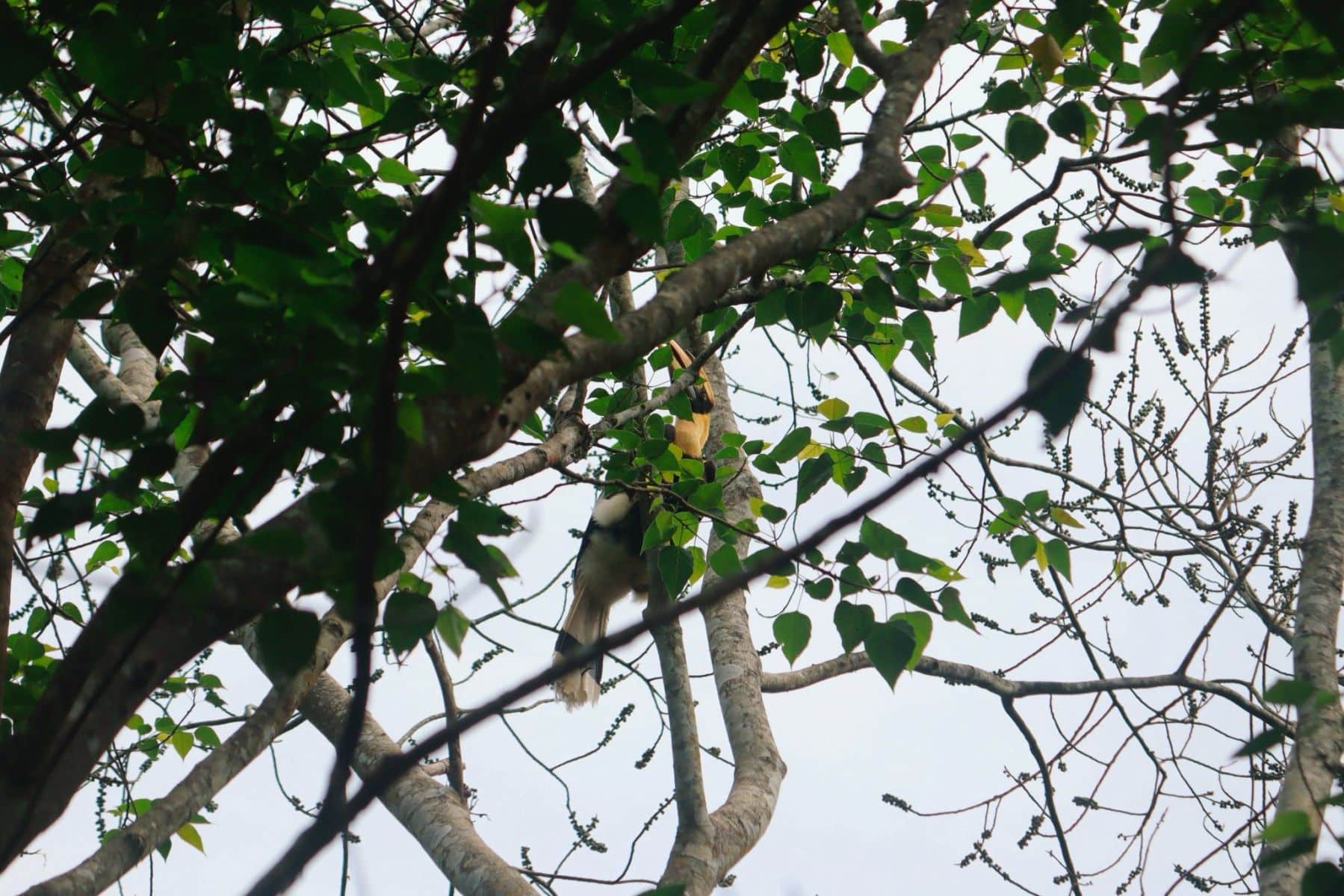Rare great hornbill spotted in Chiang Mai after 10 years

A great hornbill was spotted in a Chiang Mai national park, marking the first confirmed sighting in over a decade and signalling improved forest health.
Chiang Mai’s Doi Pha Hom Pok National Park is celebrating a major ecological milestone after spotting a great hornbill, also known locally as nok kahang or nok gak, for the first time in over a decade.
The rare bird was seen perched high in the treetops near the Fang Hot Springs office, drawing excitement from park officials and wildlife enthusiasts. The sighting was confirmed yesterday, November 14, by Asanai Nilpudsa, a senior forestry specialist and head of the park.
“This is the first recorded sighting of the great hornbill in our forest in more than 10 years. It’s a sign that our ecosystem is recovering well, thanks to the continuous efforts of our staff and the local communities.”

The great hornbill is one of Thailand’s most iconic and largest hornbill species, measuring between 120 and 140 centimetres. Males can grow up to 1.5 metres in length. Recognised by their striking black and white feathers, large yellow bills tipped with orange, and impressive casques, these birds are a symbol of enduring love. Once bonded, hornbills typically remain with their mate for life.
The males feature black markings on their casque and red irises, while the females have lighter eyes and lack the casque markings. Juveniles have a smaller, flatter casque until they mature.
These magnificent birds usually forage among the forest canopy, feeding mainly on wild fruit, particularly figs, as well as fruits from trees such as yangon, pipwan, and tasue. They are also opportunistic feeders, known to eat snakes, rodents, birds, and insects.

Although often seen in pairs, hornbills sometimes gather in flocks of up to 150 during the non-breeding season, roosting together in valleys. They favour evergreen, deciduous, and mixed forests at altitudes up to 1,000 metres, though they’ve also been recorded in mountainous regions as high as 2,000 metres, according to KhaoSod.
The bird’s call, described as “gak gak gak kahang kahang” or “gawah,” is how it earned its local nickname.
The unexpected sighting is being hailed as a promising sign for biodiversity in the region and has given renewed hope to conservationists working to preserve the species and its fragile habitat.
Latest Thailand News
Follow The Thaiger on Google News:


























